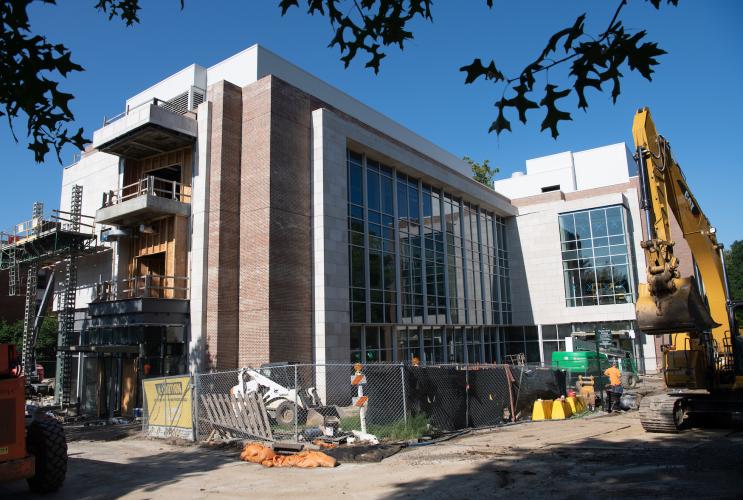
OHIO makes progress on strategic research goals

Amplifying research, scholarship and creative activity is a key strategic initiative of Ohio University. Over the last year, the University has made notable progress on major goals in this area, and also successfully responded to immediate needs brought on by the COVID-19 pandemic.
University researchers continue to attract grants from major funding agencies such as the National Institutes of Health, the National Science Foundation, and U.S. Army. The grants are supporting critical work on topics such as exploring a possible treatment for stroke, understanding infant swallowing disorders, and creating nanoscale smoke screens for military use.
In addition, two recent grants from the National Science Foundation’s Major Research Instrumentation program are allowing interdisciplinary teams led by researchers in the Russ College of Engineering and Technology and College of Arts and Sciences to purchase state-of-the-art equipment for use by faculty and students. The new chemistry building, currently under construction, will house one of the new instruments.
The Research Division also has developed a collaborative business model with the Russ College to make a scanning electron microscope at Stocker Center available to researchers across the institution, offering wider access to this key piece of scientific equipment.
To stimulate grant funding in the humanities, this fall the University is sponsoring a major workshop with the National Endowment for the Humanities for faculty, staff, and graduate students.
In addition to securing grants and equipment, Ohio University also has been focused on hiring clusters of researchers who can elevate research activity in specific areas. In early September, the University’s Musculoskeletal and Neurological Institute (OMNI) announced that it had hired several new faculty who will advance research in the institute’s core areas of pain and aging. The faculty, who are affiliated with three academic colleges at the University, will conduct basic and clinical research.
Discussions are underway to explore how the University could move forward with another cluster hire, with faculty lines spanning multiple colleges, said Joseph Shields, vice president for research and creative activity. A previous cluster hire at the Heritage College of Osteopathic Medicine helped advance the university’s research efforts in the area of diabetes, he noted.
Over the last year, the Research Division also has continued efforts to support the Translational Biomedical Sciences doctoral program, which launched in 2014. The division recently completed and received approval for a plan to use royalties from University technology commercialization licenses to create quasi-endowments that will provide long-term financial support for the program.
Student enrollment in the Translational Biomedical Sciences program has grown to 20 doctoral candidates, and the first graduates of the program have been successful, Shields reported. In addition to providing innovative educational and training opportunities for individuals interested in the rising translational biomedical sciences field, the program offers graduate student support to OHIO faculty members focused on interdisciplinary health sciences research, he added.
Another area of growth over the last year is the development of the Russ Research Center, a high-tech research park for engineering and technology firms in Beavercreek, Ohio. The University has recruited new tenants, is negotiating funding with JobsOhio, and is working to develop new collaborations with the Air Force, Shields said.
In addition to pursuing these strategic initiatives, the Research Division ensured that faculty, staff, and student researchers could safely conduct their work during the COVID-19 pandemic. In the spring, the division created and managed a process to identify essential personnel who could maintain critical research operations during the campus shutdown. It also developed the plan to restart research and creative activity, including processes for field research and face-to-face human subjects research. The Research Division additionally managed the campus-wide ordering and distribution of personal protective equipment for researchers working on-site.
Moving forward, the University will continue to develop cluster hires, shared equipment resources, research partnerships, new policies, and its community-engaged research initiative as part of its strategic research plans, Shields said.
Shields presented these and other highlights of OHIO’s research endeavors to the Ohio University Board of Trustees during its October meetings.
“Even in a time of challenges—either financial or public health—the research and creative activity mission of the University remains central to what we do and deeply integrated with our educational programs,” Shields said.